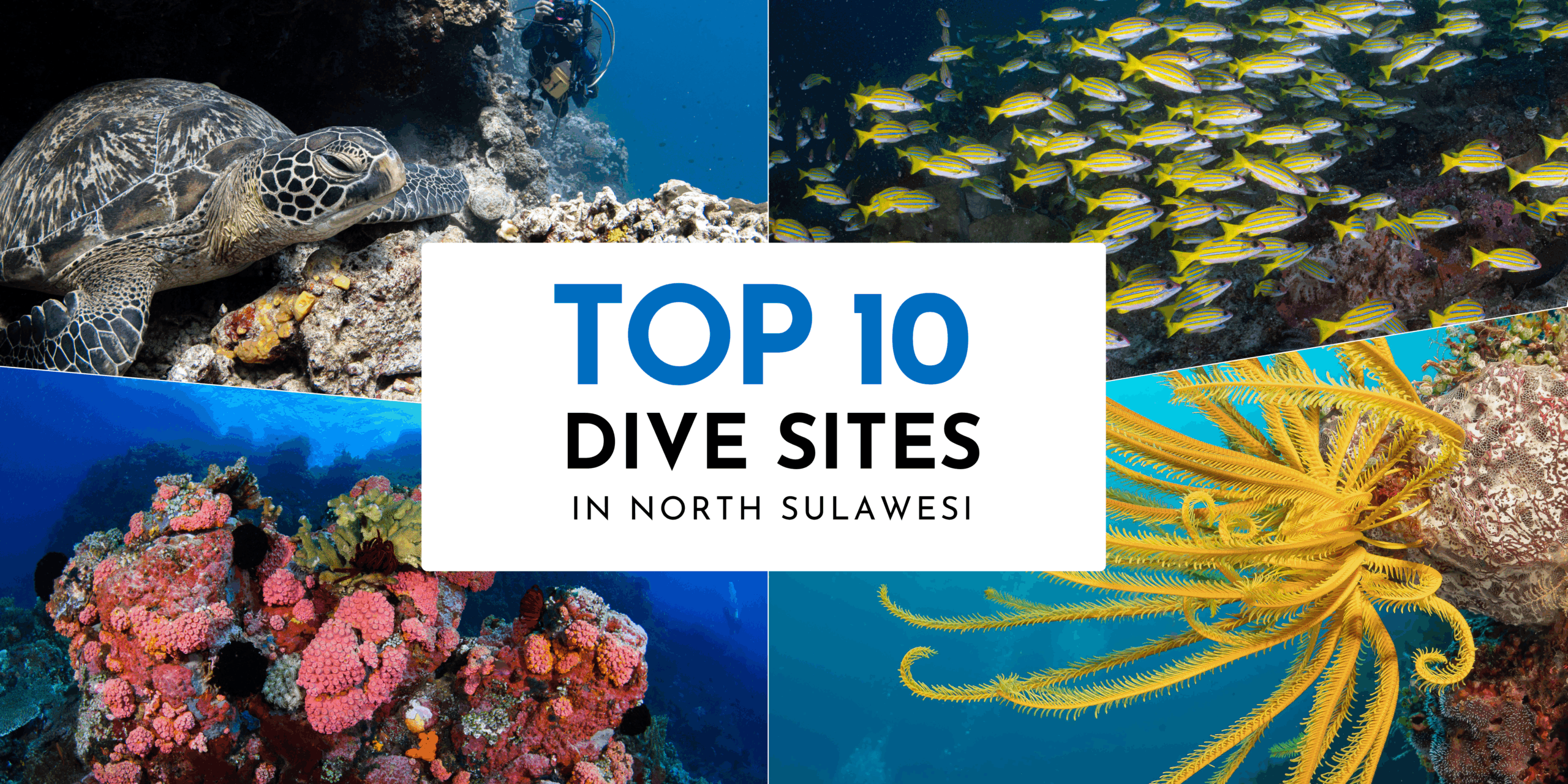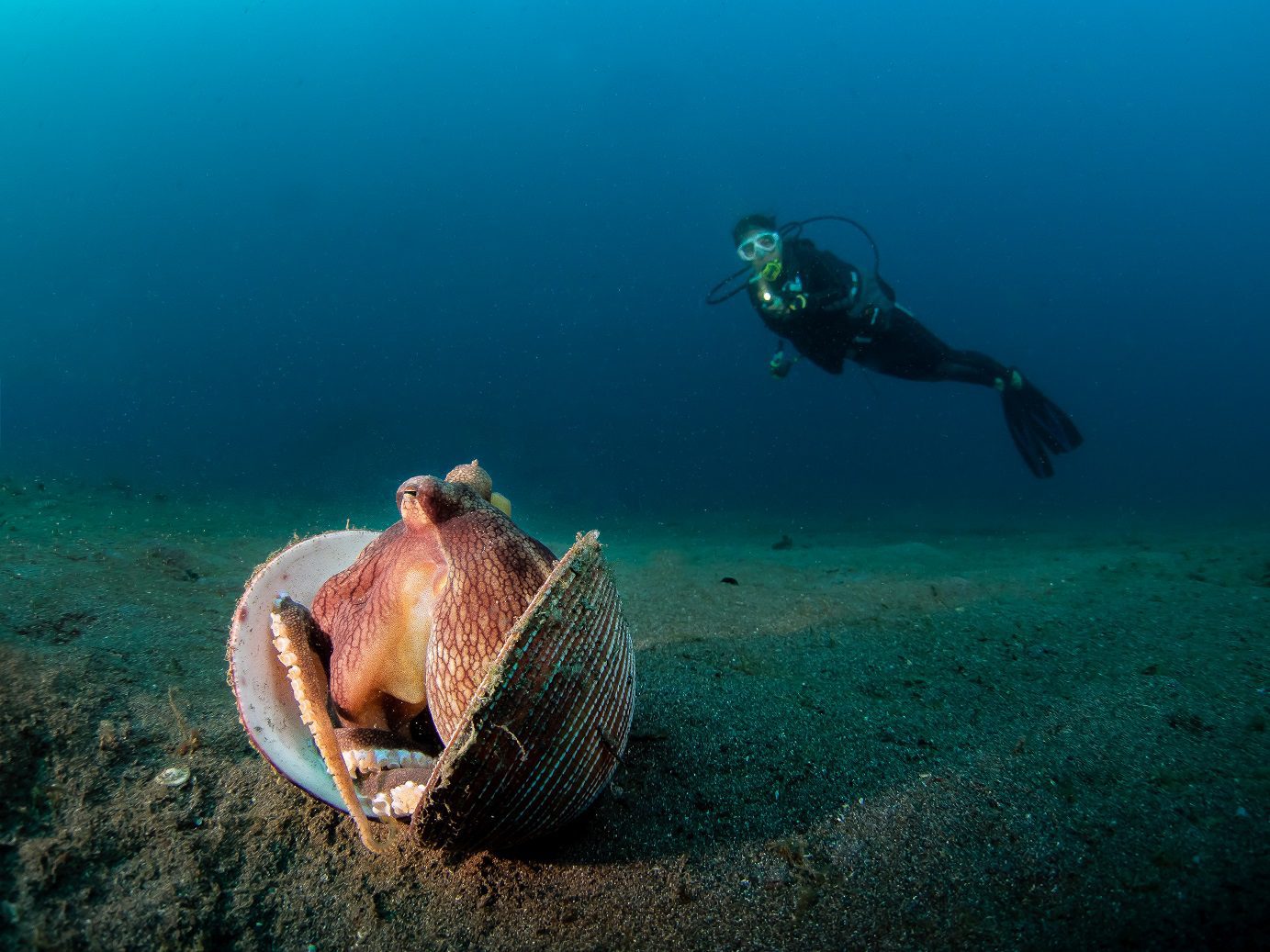
Guide to Muck Diving in Manado Bay
Have you heard other divers and underwater photographers talking about “muck diving”? Do you know what it is and why this is such a popular growing trend? Did you know that Manado Bay is growing in recognition as a muck diving and critter hotspot? Here we explain all you need to know about muck diving in Manado and Bay and why every diver needs to give it a try…!
What is Muck Diving?
The term “muck” originates from diving in muddy and murky conditions in an environment where the seafloor consists predominantly of sediment, sand (often black volcanic sand), fine silt, rocks, seagrass or coral rubble.
At some muck diving sites you’ll also find small, sporadic clusters of coral or patches of anemones and many muck diving sites also “feature” manmade debris ranging from tires and paint cans through to air conditioning units and beer bottles – ask any experienced muck diver – they will have probably seen them all.
Why Muck Diving?
Muck diving offers a completely different experience to reef diving. Muck diving takes a much more focused approach which can best be described as “critter hunting”. At our Manado Bay dive sites we usually cover a smaller area than we would when reef diving in Bunaken or Bangka – which means a more focused approach as we “hunt”.
The thrill of finding critters is one of the major draws of muck diving and you’ll be amazed by the critters which are doing an astonishingly excellent job of hiding in plain sight. We often see some extraordinary displays of unusual behavioral traits including mating, laying eggs, hunting, feeding and even hatching. With iconic critters such as (several species of) frogfish, flamboyant cuttlefish, blue ring octopus, mandarinfish, harlequin shrimps, wunderpus and mimic octopus, decorator crabs and a countless array of shrimps it’s no wonder that the world’s most elite underwater photographers spend so much time muck diving.
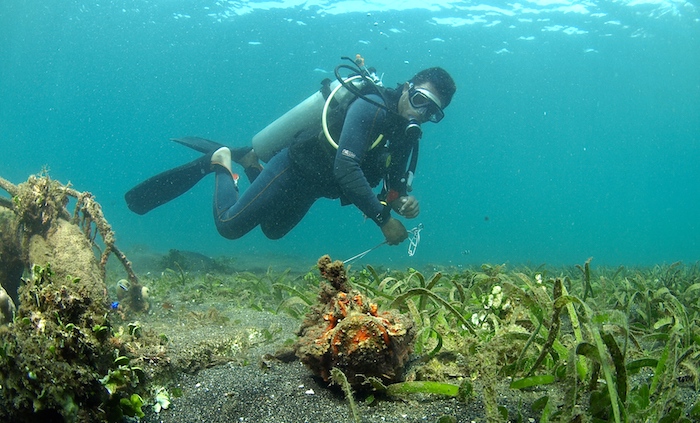
Seagrass beds are found at several of Manado Bay’s muck diving sites
Essential Tips and Techniques for Muck Diving
- Go Slow: This is not a race and it takes time to find critters that are camouflaged. Give your eyes time to catch up andstudy objects closely – not just by giving a cursory glance. Look out for features such as distinguishable fins or eyes and try to peer underneath debris, numerous cleaner shrimp and commensal shrimp species hide in the shady areas around the base of rocks, tree branches and even trash. You will be covering a relatively small area so you can afford to go slow.
- Buoyancy: Remember to maintain excellent control of your buoyancy at all times. Many critters at our Manado Bay muck diving sites lay just beneath the sand and can deliver a nasty sting if you accidentally brush up against them. Perfecting your buoyancy will improve your underwater photography in leaps and bounds too as you’ll be able to hover motionless without disturbing the bottom composition (or the critter) while perfecting your shots.
- Keep your Fins Up: The fine silt on the bottom is very easily disturbed and a careless fin kick can result in a silt cloud which limits visibility and takes a longer time than sand particles to settle. When finning, kick slowly and use a frog-style technique keeping your knees bent at 90 degrees and your fins up and raised behind you – much like the technique used by cave divers. Every now and then take a look back to make sure that you are not leaving a silt cloud behind you.
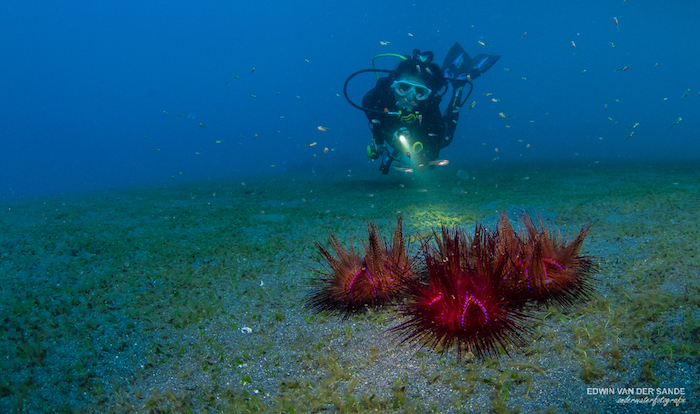
Keep your fins up and behind you to avoid disturbing the bottom composition when muck diving
- Look for Hot Spots: Although the critters at muck diving sites are perfectly at home on the exposed bare sands, they often still seek shelter from currents and places to hide from predators. With limited options this means that any foreign matter on the sand is a potential beehive of activity. Once you have spotted a possible “hotspot” (such as items of debris), approach slowly and observe and closely inspect it. Remember that you see what you expect to see, so if you are looking at some tangled rope, without really studying it, you will see only tangled rope and miss the ornate ghost pipefish that is hovering alongside it.
- Learn about Marine Life: Find out more about the marine species you are hoping to see in order to increase your chances of a sighting. Murex’s experienced dive guides don’t just have good eyes; they are marine biology trained and armed with a wealth knowledge. They understand what different critter species feed on and their preferred habitats which means they can focus on areas that are most likely to yield great findings. Our Dive Guides also host wonderful marine life presentations in resort – ask your Dive Guide about any presentations which are taking place during your stay.
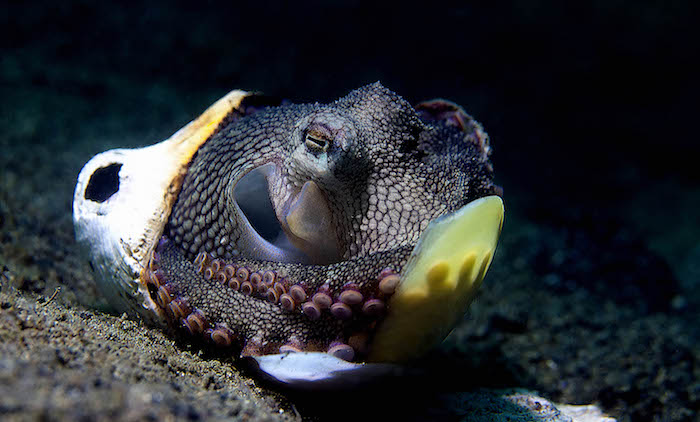
Murex Dive Guides are marine biology trained for spotting even the most camouflaged of critters. (Photo Credit: Markus Roth)
- Plan your Shots: Many critters’ eyes have adapted to the murky conditions in which they live and they do not handle constant flash photography well. Remember that muck dwelling critters rely on camouflage rather than swimming (flight) to remain undetected and so they will remain still when flashed. For this reason, try to limit your number of shots.
- Never Manipulate Marine Life: Many of the critters which we find in Manado Bay (and the Lembeh Strait) are extremely sensitive. Manipulating critters to get a closer look or to take a better photograph is not an acceptable dive practice. It is only through respectful diving practices that these intriguing marine species will continue to thrive.
- So are you ready to dive into the weird and wonderful world of muck diving? Our final piece of advice is beware – muck diving is highly addictive!
Of course, we cannot possibly list all of the muck diving species found at our Manado Bay sites but some of our favorites include frogfish, pygmy seahorses, seahorses, numerous species of nudibranch, mantis shrimps, squat lobsters, several species of cephalopods, Spanish dancers and even stargazers! Every dive in Manado Bay delivers different sightings throughout the year and rarely disappoints! To find out more and to come and see for yourself, contact us on: reservations@murexresorts.com.
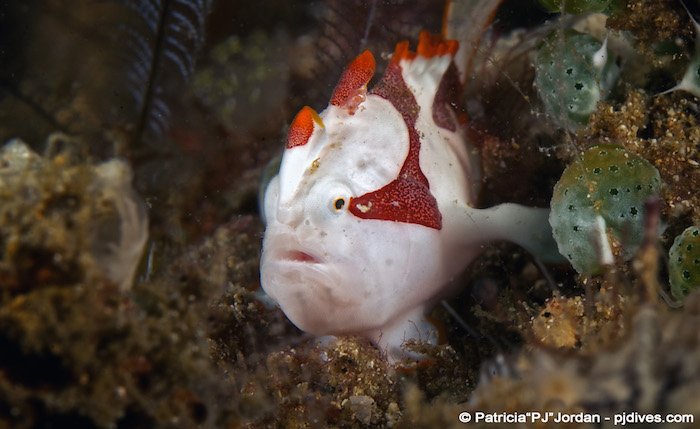
Manado Bay is a treasure trove of critter life
Passport to Paradise
Elevate your Indonesia diving experience by exploring two more phenomenal North Sulawesi dive destinations. Immerse yourself in the wonders of three remarkable destinations with the Passport to Paradise trip: Bunaken (including Manado Bay) -> Bangka -> Lembeh.
Dive into the awe-inspiring walls and sweeping vistas of Bunaken Marine Park, encounter the kaleidoscope of reefs surrounding the island of Bangka, and indulge in world-renowned muck diving during a luxurious stay in Lembeh Strait.
We look forward to welcoming you to North Sulawesi and Murex Dive Resorts soon! To begin your journey and explore our Murex Resort rates, secure your spot for the extraordinary Passport to Paradise package. Book now and dive your way through this underwater paradise!


